#Iot development examples
Explore tagged Tumblr posts
Text
We are the best IoT development company in Bharat, we specialize in delivering personalized Internet of Things app development services that take your business to the next level. Whether you need generative IoT solutions, IoT assistants and chatbot development, model development, or any other IoT service, we have the expertise to turn your vision into reality.
We are an IoT development company specializing in architecting, creating, and extending IoT solutions that reach all industries, primarily healthcare, automotive, med tech, manufacturing, and everyday consumer products. Our services work with an approach to scalable IoT solutions that can be adopted and grow with your business.
We deal in cybersecurity, implementing robust measures to safeguard your data and devices and personalize our solutions to meet the specific requirements of your customers. With our expertise and promise to add value, we are dedicated to helping you harness the full potential of the Internet of Things, enabling you to stay ahead in your industry and deliver unparalleled value to your clients.

0 notes
Text
The Rise of 5G and Its Impact on Mobile App Development

5G isn’t just about faster internet — it’s opening up a whole new era for Mobile App Development. With dramatically higher speeds, ultra-low latency, and the ability to connect millions of devices seamlessly, 5G is transforming how developers think about building apps. From richer experiences to smarter services, let's explore how 5G is already reshaping the mobile app landscape in 2025 and beyond.
1. Lightning-Fast Data Transfer
One of the biggest promises of 5G is incredibly fast data transfer — we're talking about speeds up to 100 times faster than 4G. For mobile apps, this means that large files, high-resolution images, and HD or even 4K video content can be downloaded or streamed instantly. Apps that once needed to compress their data heavily or restrict features due to bandwidth limits can now offer fuller, richer experiences without worrying about lag.
2. Seamless Real-Time Experiences
5G dramatically reduces latency, meaning the time between a user action and the app’s response is almost instant. This will revolutionize apps that rely on real-time communication, such as video conferencing, live-streaming platforms, and online gaming. Developers can create much more responsive apps, allowing users to interact with data, people, and services with zero noticeable delay.
3. The Growth of AR and VR Mobile Applications
Augmented Reality (AR) and Virtual Reality (VR) apps have been growing, but 5G takes them to another level. Because of the high bandwidth and low latency, developers can now build more complex, interactive, and immersive AR/VR experiences without requiring bulky hardware. Imagine trying on clothes virtually in real-time or exploring a vacation destination through your phone — 5G is making this possible within Mobile App Development.
4. Smarter IoT-Connected Apps
The Internet of Things (IoT) will thrive even more in a 5G environment. Smart home apps, connected car apps, fitness trackers, and other IoT applications will be able to sync and update faster and more reliably. Developers can now integrate complex IoT ecosystems into mobile apps with minimal worries about network congestion or instability.
5. Enhanced Mobile Cloud Computing
Thanks to 5G, mobile cloud computing becomes much more viable. Instead of relying solely on local device storage and processing, apps can now store large amounts of data and execute processes directly in the cloud without latency issues. This allows users with even mid-range smartphones to experience high-performance features without the need for powerful hardware.
6. Revolutionizing Mobile Commerce
E-commerce apps are set to benefit greatly from 5G. Instant-loading product pages, real-time customer support, virtual product previews through AR, and lightning-fast payment gateways will enhance user experience dramatically. This could lead to higher conversion rates, reduced cart abandonment, and greater user loyalty in shopping apps.
7. Opportunities for New App Categories
With the technical limitations of mobile networks reduced, a whole new range of apps becomes possible. Real-time remote surgeries, autonomous vehicles controlled via mobile apps, and highly advanced telemedicine solutions are just a few examples. The doors are open for mobile developers to innovate and create applications that were previously impossible.
8. Better Security Requirements
With 5G’s mass connectivity also comes a bigger responsibility for security. As mobile apps become more connected and complex, developers must prioritize data protection, encryption, and secure authentication methods. Building security deeply into Mobile App Development workflows will be critical to maintain user trust.
9. More Demanding User Expectations
As 5G rolls out globally, users will expect every app to be faster, smoother, and more capable. Apps that fail to leverage the benefits of 5G may seem outdated or sluggish. This shift will push developers to continually optimize their apps to take advantage of higher speeds and smarter networking capabilities.
10. Preparing for the 5G Future
Whether you’re building entertainment apps, business solutions, healthcare tools, or gaming platforms, now is the time to adapt to 5G. Developers must start thinking about how faster speeds, greater device connections, and cloud capabilities can improve their mobile applications. Partnering with experts in Mobile App Development who understand the full potential of 5G will be key to staying ahead in a rapidly evolving digital world.
3 notes
·
View notes
Text
Introduction
About
I'm Jason, a computer science student, therefore I'm not really that interested in making a game or being a part of the games industry. At the end of the day I'm suppose to complete certain units in my IoT and Mobile Technologies minor one of which is IGB120, and my actual industry pathway is towards cybersecurity, network infrustructure, and data centres (probably).
My goal is to take what I learn from this unit and to then maybe apply it to a secondary project while I'm pursuing my primary career in cybersecurity. Hopefully I'm able to learn enough of the basics to maybe create a game for fun or help a friend who's interested in creating a game.
IF I was working towards a game development career (let's pretend), I'd be interested in indie projects especially in line with the internet community and culture. I'm already pursuing an online audience with YouTube/Twitch as a side hustle so I'd be interested in being a part of a team to make something that the internet would really enjoy.
Note that when I mention the internet it'd be the western, English speaking side of the internet. However, a good portion of western internet culture does enjoy internet culture from other parts of the world so even being a part of a game that accesses different internet circles and brings them together would be a pretty impressive goal to work towards.
Games that I have in mind that have had an impact on internet culture recently would be MiSide, Helldivers 2, Palworld, and The Confin of Andy and Leyley as examples. There are some older titles like Stardew Valley, No Man's Sky, and Dokidoki Literature Club which have had an impact 5-10 years ago but are not as relevant today.
Next post will be about an elevator pitch for the game I'm required to design.
2 notes
·
View notes
Text
The Impact of Faridabad’s IT Infrastructure on B.Tech CSE and IT Careers

In recent years, Faridabad has emerged as a thriving hub for technology and innovation. With its rapidly growing IT infrastructure, tech parks, and industrial zones, the city has become a hotspot for B.Tech CSE (Computer Science Engineering) and IT (Information Technology) graduates. If you’re a student or a professional wondering how Faridabad’s development impacts your career, this blog is for you. Let’s dive into how the city’s IT ecosystem is shaping opportunities for CSE and IT graduates.
Why Faridabad is Becoming a Tech Hub
Faridabad, part of the National Capital Region (NCR), is strategically located near Delhi, making it a prime location for businesses and industries. Over the past decade, the city has witnessed significant growth in its IT infrastructure. From state-of-the-art tech parks to industrial zones, Faridabad is attracting IT companies, startups, and multinational corporations (MNCs). This growth is creating a ripple effect, opening up countless opportunities for B.Tech CSE and IT graduates.
How Faridabad’s IT Infrastructure Benefits CSE and IT Graduates
1. Tech Parks: A Gateway to Opportunities
Faridabad is home to several tech parks and IT hubs, such as the Faridabad IT Park and Neo IT Park. These parks house some of the biggest names in the tech industry, including startups and MNCs. For B.Tech CSE and IT graduates, this means:
Access to Top Companies: Tech parks are filled with companies looking for skilled professionals in software development, data analysis, cybersecurity, and more.
Networking Opportunities: Working in these parks allows graduates to connect with industry leaders, attend tech events, and build a strong professional network.
Exposure to Cutting-Edge Technology: Tech parks often host workshops, seminars, and training sessions, helping graduates stay updated with the latest trends in technology.
2. Industrial Zones: Bridging the Gap Between Academia and Industry
Faridabad’s industrial zones, such as the Faridabad Industrial Area, are not just about manufacturing. Many industries here are adopting advanced technologies like IoT (Internet of Things), AI (Artificial Intelligence), and automation. This creates a demand for tech-savvy professionals.
Diverse Job Roles: CSE and IT graduates can find roles in software development, system management, and IT support in these industries.
Hands-On Experience: Working in industrial zones provides practical experience, helping graduates apply their classroom knowledge to real-world problems.
3. Startup Ecosystem: A Platform for Innovation
Faridabad’s startup ecosystem is booming, with many young entrepreneurs launching tech-based startups. This is great news for B.Tech CSE and IT graduates because:
Entrepreneurial Opportunities: Graduates with innovative ideas can start their own ventures and contribute to the city’s tech growth.
Flexible Work Environments: Startups often offer dynamic work cultures, allowing graduates to explore multiple roles and gain diverse experiences.
Mentorship and Guidance: Many startups in Faridabad are supported by incubators and accelerators, providing mentorship and resources to young professionals.
4. Government Initiatives: Boosting IT Growth
The Haryana government has been actively promoting Faridabad as a tech hub through various initiatives. For example:
Skill Development Programs: The government offers training programs to help graduates enhance their technical skills and employability.
Incentives for IT Companies: Tax benefits and subsidies are attracting more IT companies to set up offices in Faridabad, increasing job opportunities for graduates.
Career Opportunities for B.Tech CSE and IT Graduates in Faridabad
With its growing IT infrastructure, Faridabad offers a wide range of career opportunities for CSE and IT graduates. Some of the most in-demand roles include:
Software Developer: Designing and developing software applications for businesses.
Data Analyst: Analyzing data to help companies make informed decisions.
Cybersecurity Expert: Protecting systems and networks from cyber threats.
Cloud Engineer: Managing cloud-based systems and services.
AI/ML Specialist: Developing AI and machine learning solutions for various industries.
The average salary for entry-level roles in Faridabad ranges from ₹3.5 to ₹6 lakhs per annum, with experienced professionals earning significantly more.
How EIT Faridabad Prepares Students for the IT Industry
At EIT Faridabad, we understand the importance of aligning education with industry needs. Our B.Tech CSE and IT programs are designed to equip students with the skills and knowledge required to thrive in Faridabad’s IT ecosystem. Here’s how we do it:
Industry-Ready Curriculum: Our courses are regularly updated to include the latest technologies and trends.
Internships and Placements: We partner with top IT companies in Faridabad to provide internships and placement opportunities.
Workshops and Seminars: Regular sessions with industry experts help students gain practical insights.
State-of-the-Art Labs: Our advanced labs allow students to experiment and innovate.
Tips for B.Tech CSE and IT Graduates to Succeed in Faridabad
Stay Updated: The tech industry evolves rapidly. Keep learning new skills and technologies.
Build a Strong Network: Attend tech events, join online communities, and connect with professionals.
Gain Practical Experience: Internships and projects are a great way to build your resume.
Focus on Soft Skills: Communication, teamwork, and problem-solving are just as important as technical skills.
Conclusion
Faridabad’s IT infrastructure, tech parks, and industrial zones are creating a wealth of opportunities for B.Tech CSE and IT graduates. Whether you’re looking to join a top IT company, work in an industrial zone, or start your own venture, Faridabad has something for everyone. At EIT Faridabad, we’re committed to helping our students make the most of these opportunities and build successful careers in the tech industry.
If you’re passionate about technology and want to be part of Faridabad’s growing IT ecosystem, now is the perfect time to take the first step. Explore our B.Tech CSE and IT programs and start your journey toward a rewarding career!
2 notes
·
View notes
Text

The report on the approximate air support competition between the A-10 and the F-35 appears
Fernando Valduga By Fernando Valduga 03/11/2023 - 22:35in Military
A newly emerged report offers some new details about a test that compared the A-10 Warthog attack plane and the F-35 Joint Strike Fighter attack fighter, but raises more questions about the ability of the 5ª generation jet to complete the A-10's approximate air support mission.
The confidential report, completed in February 2022 by the Department of Defense's Testing and Evaluation Office, was recently released with heavy writings to the Government Supervision Project, which sued the Pentagon in a federal court after its FOIA request for the report was denied.

The report describes the results of an approximate air support flight between the F-35A and the A-10C, which was determined by Congress in the National Defense Authorization Act of 2017 and carried out in 2019.
The test was conducted in “low and medium threat environments” and not in a hostile or high threat environment because the “F-35A, along with the F-35B and F-35C, is being thoroughly evaluated during the IOT&E of the F-35 in high threat scenarios versus modern and dense combat aircraft and surface-to-air missiles, missions for which the A-10C was not designed,” the report said.
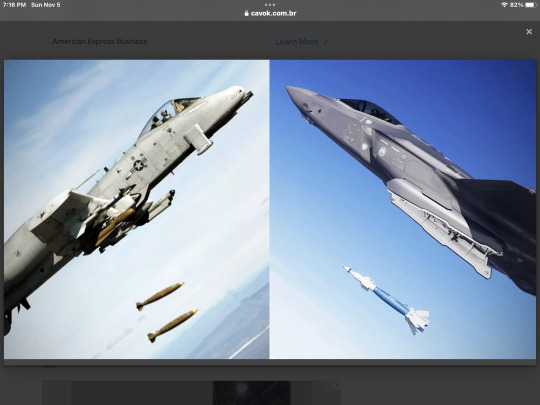
No ground troops participated in the flight, which does not “invalidate the conclusions of this report,” DOT&E wrote in the report. "However, a more dynamic and representative environment may be required for operational testing of these missions to evaluate improvements in the performance of these or any other systems under test."
Many details are hidden in the version released for POGO. For example, it says that the A-10 “allowed more attacks than the typical loading of the F-35A,” but does not reveal how many targets each aircraft hit in the test.
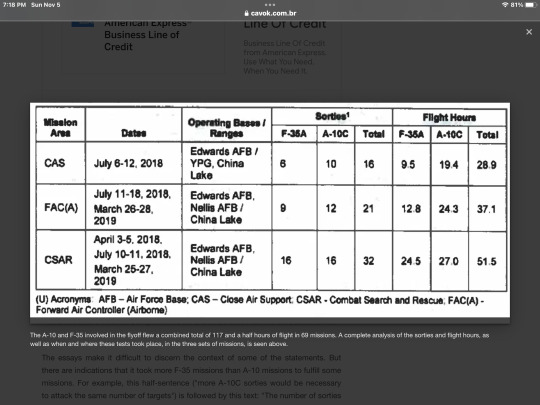
The A-10 and F-35 involved in the flyoff flew a combined total of 117 and a half hours of flight in 69 missions. A complete analysis of the sorties and flight hours, as well as when and where these tests took place, in the three sets of missions, is seen above.
The essays make it difficult to discern the context of some of the statements. But there are indications that it took more F-35 missions than A-10 missions to fulfill some missions. For example, this half-sentence ("more A-10C sorties would be necessary to attack the same number of targets") is followed by this text: "The number of sorties needed to complete the same mission objectives in contested environments would depend on air defense suppression plans."

This may result in part of the A-10's ability to carry more ammunition. The attack plane was designed around a huge 30mm GAU-8 cannon that contains 1,350 cartridges of ammunition, while the F-35's 25mm GAU-22 cannon can carry only about 181 cartridges.
Elsewhere, the report noted the ability of the A-10 to fly closer to the targets than the F-35:
youtube
"The test team did not record the inclined range of the target with the generated coordinates, so its effect cannot be evaluated directly. Even so, tactics usually caused A-10C pilots to fly closer to the target than F-35A pilots, which could explain some of the differences in measured location errors. The target location error only affects the use of GPS-aided weapons. In any case, the location error is sufficient to indicate the aiming pod of another aircraft [approximate air support].

A table listing various competitive capabilities between the F-35A and A-10C at the time of flyoff. DOD via FOIA/POGO
The report also noted that the most recent weapon did not always manage to fire in a straight line. DOT&E told the Pentagon to “fix the F-35A cannon, improve digital communication, video data linkability and interoperability with 4ª generation aircraft, and develop training programs to further improve the effectiveness of the F-35A in these missions.”

Russ Goemaere, spokesman for the F-35 Joint Program Office, said that the program "improved" the weapon and interoperability of the jet with 4ª generation fighters and said that "they are effective".
In his own analysis, Dan Grazier of POGO wrote: "Despite the heavy essays in the released report, it is clear that the results of these flawed tests disappointed the constituted powers. If the F-35 had been the winner, there would be no doubt that a clear and declarative statement of this fact would have appeared prominently in the initial paragraph of the report."

The U.S. Air Force did not want to comment on the report, nor did it say whether the leaders of the armed forces tried to prevent the release of the report. A spokesman said that close air support is a mission, not a specific platform.
"The future force will inherently be capable of approximate air support, with multifunctional capabilities to ensure survivability in all scenarios. Although successful in permissive environments, the A-10 will not have the ability to survive in a highly disputed future fight,” said service spokeswoman Ann Stefanek.

The U.S. military has made intense use of the A-10 in recent decades, moving it to Iraq for multiple conflicts and to Afghanistan against the Taliban. More recently, the U.S. sent Warthogs to the Middle East to deter aggression and prevent the spread of the Israel-Hamas war.
Air Force officers have sought to retire the A-10, which was introduced in 1977 as a Soviet tanker. But their arguments - that money would be better applied to more modern aircraft, that satellite and laser-guided bombs were sufficient for close air support missions - met strong resistance from legislators whose districts housed A-10 or ground troops they protect. Still, the last few years seem to be ending the service of the plane.

An A-10 Warthog, in the lower left corner, flies along with, at the top, from left to right, an F-16C Viper, an F-35A Joint Strike Fighter and an F-15E Strike Eagle. (photo: USAF)
When asked about the report, one of the prominent members of the House Armed Services Committee said he is ready to say goodbye to the A-10 - if not its capabilities. Congressman, chairman of the tactical subcommittee on air and ground forces of the HASC, says he is confident that the Air Force will be able to find a way to maintain approximate air support capabilities as it advances to the F-35.
Source: Defense One
Tags: A-10 Thunderbolt IIMilitary AviationCAS - Close-Air SupportLockheed Martin F-35A Lightning IIUSAF - United States Air Force / U.S. Air Force
Sharing
tweet
Fernando Valduga
Fernando Valduga
Aviation photographer and pilot since 1992, has participated in several events and air operations, such as Cruzex, AirVenture, Dayton Airshow and FIDAE. He has work published in specialized aviation magazines in Brazil and abroad. Uses Canon equipment during his photographic work in the world of aviation.
Related news
BRAZIL
FAB: VC-2 aircraft repatriates Brazilians who were in the West Bank
03/11/2023 - 19:33
MILITARY
New image of the B-21 Raider shows mysterious vertical elements on the tail
03/11/2023 - 18:51
MILITARY
L3Harris will modernize the electronic warfare system of the U.S. Navy F/A-18
03/11/2023 - 16:00
MILITARY
Czech Republic will establish training and simulation center for F-35 hunting
03/11/2023 - 14:00
MILITARY
Still dependent on Russia, India exchanges its MiG-21 for the Su-30 MKI
03/11/2023 - 12:30
MILITARY
Sweden orders AIM-120C-8 AMRAAM missiles for Gripen fighters
03/11/2023 - 11:00
Client PortalClient PortalClient PortalClient PortalClient PortalClient PortalClient PortalClient PortalhomeMain PageEditorialsINFORMATIONeventsCooperateSpecialitiesadvertiseabout
Cavok Brazil - Digital Tchê Web Creation
Commercial
Executive
Helicopters
HISTORY
Military
Brazilian Air Force
Space
Specialities
Cavok Brazil - Digital Tchê Web Creation
24 notes
·
View notes
Text
Are You Searching for Ethical Hacking Course Fees In Chennai?
Live Wire, we apprehend that positive cyber security coaching goes past theoretical concepts; it requires hands-on trip and realistic abilities development. That's why our Ethical Hacking path is meticulously crafted to furnish college students with real-world scenarios, simulated environments, and hands-on labs the place they can observe their information and methods in a secure and managed setting. From simple principles such as foot printing and reconnaissance to superior subjects like community penetration trying out and vulnerability assessment, our route covers a broad vary of subjects to make certain that college students are well-prepared to handle any cyber security challenge.
One of the key strengths of Live Wire's Ethical Hacking Course Fees In Chennai route lies in its college of enterprise professionals and licensed instructors. With years of journey in cyber security and a deep appreciation of the cutting-edge threats and vulnerabilities, our instructors convey a wealth of understanding and information to the classroom. They no longer solely furnish enticing lectures and interactive discussions however additionally provide realistic insights and real-world examples that enrich the gaining knowledge of journey and put together college students for the challenges they may additionally come upon in their careers.
Furthermore, Live Wire is dedicated to staying abreast of the modern trends and developments in the area of cyber security. Our Ethical Hacking path is normally up to date to mirror the ever-changing hazard landscape, rising technologies, and excellent practices in the industry. Whether it is incorporating new equipment and strategies or addressing rising threats such as ransom ware and IoT vulnerabilities, we make sure that our curriculum stays applicable and up to date to meet the evolving wishes of the cyber security industry.
In addition to its complete curriculum and specialist faculty, Live Wire additionally affords a vary of help offerings to assist college students prevail in their Ethical Hacking Course Fees In Chennai journey. From profession training and job placement help to examination practise and certification support, we are dedicated to offering the assets and aid college students want to reap their goals. Whether you are searching to boost your profession in cyber security or transition into a new role, Live Wire is right here to assist you each and every step of the way.
But possibly what sincerely units Live Wire aside is its unwavering dedication to moral requirements and professionalism. As advocates for moral hacking, we emphasize the significance of conducting safety assessments and penetration checks ethically and responsibly, with full appreciate for privacy, confidentiality, and felony compliance. Our aim is now not solely to instruct expert experts however additionally to domesticate a tradition of ethics and integrity inside the cyber security community.
In conclusion, Live Wire stands as the unmatched chief in imparting the high-quality Ethical Hacking path in Tambaram, Chennai. With its complete curriculum, specialist faculty, enterprise relevance, and dedication to ethics and professionalism, Live Wire gives college students the chance to embark on a lucrative and enjoyable profession in cyber security. Join Live Wire these days and unencumbered your viable as a moral hacker!

2 notes
·
View notes
Text
#TheeForestKingdom #TreePeople
{Terrestrial Kind}
Creating a Tree Citizenship Identification and Serial Number System (#TheeForestKingdom) is an ambitious and environmentally-conscious initiative. Here’s a structured proposal for its development:
Project Overview
The Tree Citizenship Identification system aims to assign every tree in California a unique identifier, track its health, and integrate it into a registry, recognizing trees as part of a terrestrial citizenry. This system will emphasize environmental stewardship, ecological research, and forest management.
Phases of Implementation
Preparation Phase
Objective: Lay the groundwork for tree registration and tracking.
Actions:
Partner with environmental organizations, tech companies, and forestry departments.
Secure access to satellite imaging and LiDAR mapping systems.
Design a digital database capable of handling millions of records.
Tree Identification System Development
Components:
Label and Identity Creation: Assign a unique ID to each tree based on location and attributes. Example: CA-Tree-XXXXXX (state-code, tree-type, unique number).
Attributes to Record:
Health: Regular updates using AI for disease detection.
Age: Approximate based on species and growth patterns.
Type: Species and subspecies classification.
Class: Size, ecological importance, and biodiversity contribution.
Rank: Priority based on cultural, historical, or environmental significance.
Data Collection
Technologies to Use:
Satellite Imaging: To locate and identify tree clusters.
LiDAR Scanning: For precise 3D modeling of forests.
On-the-Ground Surveys: To supplement remote sensing data.
AI Analysis: For rapid categorization and health diagnostics.
Registration and Citizenship Assignment
Tree Dossier: Each tree receives a profile in the database with all its recorded attributes.
Citizen Designation: Trees are acknowledged as citizens of Thee Forest Kingdom, emphasizing ecological respect.
Legal Framework: Advocate for laws to grant trees specific rights under environmental protection acts.
Maintenance and Monitoring
Health Monitoring: Use drones, satellite updates, and IoT sensors for ongoing health assessments.
Database Updates: Incorporate real-time data about environmental changes and tree growth.
Public Involvement
Encourage people to "adopt" trees and participate in their preservation.
Create educational programs to promote awareness of tree citizenship.
Key Benefits
Environmental Conservation: Improved forest management through real-time data and protection of ecosystems.
Cultural Recognition: Trees are recognized as a vital part of the Earth’s community, honoring their importance.
Ecological Advocacy: Strengthened legal protections for forests and individual trees.
Next Steps
Assemble a task force of environmental scientists, satellite imaging experts, and software developers.
Secure funding through governmental grants, non-profits, and eco-conscious corporations.
Pilot the program in a smaller region before scaling to all of California.
Would you like me to draft a more detailed technical or legal framework for this system?
The implementation of the Tree Citizenship Identification Network and System (#TheeForestKingdom) requires a robust technological and operational framework to ensure efficiency, accuracy, and sustainability. Below is an implementation plan divided into major components.
System Architecture
a. Centralized Tree Database
Purpose: To store and manage tree data including ID, attributes, location, and health.
Components:
Cloud-based storage for scalability.
Data categorization based on regions, species, and priority.
Integration with satellite and IoT data streams.
b. Satellite & Imaging Integration
Use satellite systems (e.g., NASA, ESA) for large-scale tree mapping.
Incorporate LiDAR and aerial drone data for detailed imaging.
AI/ML algorithms to process images and distinguish tree types.
c. IoT Sensor Network
Deploy sensors in forests to monitor:
Soil moisture and nutrient levels.
Air quality and temperature.
Tree health metrics like growth rate and disease markers.
d. Public Access Portal
Create a user-friendly website and mobile application for:
Viewing registered trees.
Citizen participation in tree adoption and reporting.
Data visualization (e.g., tree density, health status by region).
Core Technologies
a. Software and Tools
Geographic Information System (GIS): Software like ArcGIS for mapping and spatial analysis.
Database Management System (DBMS): SQL-based systems for structured data; NoSQL for unstructured data.
Artificial Intelligence (AI): Tools for image recognition, species classification, and health prediction.
Blockchain (Optional): To ensure transparency and immutability of tree citizen data.
b. Hardware
Servers: Cloud-based (AWS, Azure, or Google Cloud) for scalability.
Sensors: Low-power IoT devices for on-ground monitoring.
Drones: Equipped with cameras and sensors for aerial surveys.
Network Design
a. Data Flow
Input Sources:
Satellite and aerial imagery.
IoT sensors deployed in forests.
Citizen-reported data via mobile app.
Data Processing:
Use AI to analyze images and sensor inputs.
Automate ID assignment and attribute categorization.
Data Output:
Visualized maps and health reports on the public portal.
Alerts for areas with declining tree health.
b. Communication Network
Fiber-optic backbone: For high-speed data transmission between regions.
Cellular Networks: To connect IoT sensors in remote areas.
Satellite Communication: For remote regions without cellular coverage.
Implementation Plan
a. Phase 1: Pilot Program
Choose a smaller, biodiverse region in California (e.g., Redwood National Park).
Test satellite and drone mapping combined with IoT sensors.
Develop the prototype of the centralized database and public portal.
b. Phase 2: Statewide Rollout
Expand mapping and registration to all California regions.
Deploy IoT sensors in vulnerable or high-priority areas.
Scale up database capacity and integrate additional satellite providers.
c. Phase 3: Maintenance & Updates
Establish a monitoring team to oversee system health and data quality.
Update the network with new technologies (e.g., advanced AI models).
Periodically review and revise data collection protocols.
Partnerships
Government Agencies: U.S. Forest Service, California Department of Forestry and Fire Protection.
Tech Companies: Collaborate with Google Earth, Amazon AWS, or Microsoft for cloud and AI capabilities.
Environmental Organizations: Partner with WWF, Sierra Club, or TreePeople for funding and advocacy.
Budget Estimation
Initial Investment:
Satellite data and licenses: $10M
IoT sensors and deployment: $5M
Database and app development: $3M
Operational Costs:
Cloud services and data storage: $2M/year
Maintenance and monitoring: $1M/year
Research and development: $1M/year
Long-term Vision
Expand the system to other states or globally.
Use the database for reforestation efforts and combating deforestation.
Develop educational programs to teach communities about the importance of trees as citizens.
Would you like me to assist in designing the user interface for the public portal or drafting partnership proposals for funding?
To begin building the program for the Tree Citizenship Identification System, we’ll start with a scalable framework that allows us to process, store, and analyze data while preparing for future expansions. Here's an actionable development plan with an initial focus on foundational code and infrastructure:
Step-by-Step Development
Phase 1: Setting Up the Backend Infrastructure
Objective: Create the core database and develop the data pipeline for processing tree data.
Technologies:
Programming Languages: Python, JavaScript (Node.js), SQL.
Frameworks: Flask or FastAPI for APIs, Django for web application backend.
Database: PostgreSQL for structured data, MongoDB for unstructured data.
Code Snippet 1: Database Schema Design (PostgreSQL)
-- Table for Tree Registry CREATE TABLE trees ( tree_id SERIAL PRIMARY KEY, -- Unique Identifier location GEOGRAPHY(POINT, 4326), -- Geolocation of the tree species VARCHAR(100), -- Species name age INTEGER, -- Approximate age in years health_status VARCHAR(50), -- e.g., Healthy, Diseased height FLOAT, -- Tree height in meters canopy_width FLOAT, -- Canopy width in meters citizen_rank VARCHAR(50), -- Class or rank of the tree last_updated TIMESTAMP DEFAULT NOW() -- Timestamp for last update );
-- Table for Sensor Data (IoT Integration) CREATE TABLE tree_sensors ( sensor_id SERIAL PRIMARY KEY, -- Unique Identifier for sensor tree_id INT REFERENCES trees(tree_id), -- Linked to tree soil_moisture FLOAT, -- Soil moisture level air_quality FLOAT, -- Air quality index temperature FLOAT, -- Surrounding temperature last_updated TIMESTAMP DEFAULT NOW() -- Timestamp for last reading );
Code Snippet 2: Backend API for Tree Registration (Python with Flask)
from flask import Flask, request, jsonify from sqlalchemy import create_engine from sqlalchemy.orm import sessionmaker
app = Flask(name)
Database Configuration
DATABASE_URL = "postgresql://username:password@localhost/tree_registry" engine = create_engine(DATABASE_URL) Session = sessionmaker(bind=engine) session = Session()
@app.route('/register_tree', methods=['POST']) def register_tree(): data = request.json new_tree = { "species": data['species'], "location": f"POINT({data['longitude']} {data['latitude']})", "age": data['age'], "health_status": data['health_status'], "height": data['height'], "canopy_width": data['canopy_width'], "citizen_rank": data['citizen_rank'] } session.execute(""" INSERT INTO trees (species, location, age, health_status, height, canopy_width, citizen_rank) VALUES (:species, ST_GeomFromText(:location, 4326), :age, :health_status, :height, :canopy_width, :citizen_rank) """, new_tree) session.commit() return jsonify({"message": "Tree registered successfully!"}), 201
if name == 'main': app.run(debug=True)
Phase 2: Satellite Data Integration
Objective: Use satellite and LiDAR data to identify and register trees automatically.
Tools:
Google Earth Engine for large-scale mapping.
Sentinel-2 or Landsat satellite data for high-resolution imagery.
Example Workflow:
Process satellite data using Google Earth Engine.
Identify tree clusters using image segmentation.
Generate geolocations and pass data into the backend.
Phase 3: IoT Sensor Integration
Deploy IoT devices to monitor health metrics of specific high-priority trees.
Use MQTT protocol for real-time data transmission.
Code Snippet: Sensor Data Processing (Node.js)
const mqtt = require('mqtt'); const client = mqtt.connect('mqtt://broker.hivemq.com');
client.on('connect', () => { console.log('Connected to MQTT Broker'); client.subscribe('tree/sensor_data'); });
client.on('message', (topic, message) => { const sensorData = JSON.parse(message.toString()); console.log(Received data: ${JSON.stringify(sensorData)}); // Save data to database (Example for PostgreSQL) saveToDatabase(sensorData); });
function saveToDatabase(data) { const query = INSERT INTO tree_sensors (tree_id, soil_moisture, air_quality, temperature) VALUES ($1, $2, $3, $4) ; const values = [data.tree_id, data.soil_moisture, data.air_quality, data.temperature]; dbClient.query(query, values, (err) => { if (err) console.error('Error saving to database', err); else console.log('Sensor data saved successfully!'); }); }
Phase 4: Public Portal Development
Frontend Technologies:
React.js or Vue.js for interactive user interfaces.
Mapbox or Leaflet.js for tree visualization on maps.
Features:
Interactive tree maps with search functionality.
User registration for tree adoption programs.
Deployment Plan
Use Docker to containerize the application.
Deploy on AWS, Azure, or Google Cloud for scalability.
Monitor system health using Prometheus and Grafana.
Next Steps
Develop a testing environment for pilot deployment.
Add AI-based disease detection and prediction using TensorFlow or PyTorch.
Create an adoption feature where citizens can adopt trees and track their health.
Would you like me to set up a GitHub repository with this initial framework or assist further with deployment?
I'll prepare the project framework and outline the repository structure for the Tree Citizenship Identification System. Below is the proposed structure for the repository, followed by details of the files and components.
Proposed Repository Structure
tree-citizenship-id-system/ ├── backend/ │ ├── app.py # Flask application for backend API │ ├── database/ │ │ ├── schema.sql # Database schema for PostgreSQL │ │ ├── db_config.py # Database connection configuration │ │ └── seed_data.sql # Initial sample data for testing │ ├── services/ │ │ ├── tree_registration.py # Functions for tree registration │ │ └── sensor_data.py # Functions for processing IoT sensor data │ └── requirements.txt # Python dependencies ├── frontend/ │ ├── public/ │ │ ├── index.html # Main HTML file │ │ └── favicon.ico # Favicon for the app │ ├── src/ │ │ ├── App.js # Main React/Vue app file │ │ ├── components/ │ │ │ ├── TreeMap.js # Map component for visualizing trees │ │ │ └── TreeDetails.js # Component for detailed tree view │ │ └── styles.css # Styling for the frontend │ └── package.json # Frontend dependencies ├── scripts/ │ ├── satellite_data_processor.py # Script for processing satellite data │ └── sensor_data_simulator.py # Mock data generator for IoT sensors ├── deployment/ │ ├── Dockerfile # Docker configuration │ ├── docker-compose.yml # Docker Compose for multi-service setup │ └── cloud_setup_instructions.md # Deployment guide for cloud platforms ├── tests/ │ ├── test_backend.py # Unit tests for backend API │ └── test_frontend.js # Unit tests for frontend ├── README.md # Overview of the project └── LICENSE # Project license
Repository Details
Backend:
app.py: Main Flask app for handling API requests like tree registration and sensor data.
database/schema.sql: SQL script for creating necessary tables.
services/: Directory for modular backend logic.
Frontend:
App.js: Main entry point for the frontend application.
TreeMap.js: Integrates Mapbox/Leaflet.js for displaying tree locations.
TreeDetails.js: Displays detailed information about a selected tree.
Scripts:
satellite_data_processor.py: Automates the extraction and classification of tree data from satellite imagery.
sensor_data_simulator.py: Generates fake sensor readings for development and testing.
Deployment:
Docker configuration ensures that the app runs consistently across environments.
Cloud setup instructions provide guidelines for deploying on platforms like AWS, Azure, or GCP.
Tests:
Unit tests ensure the reliability of both the backend and frontend.
Next Steps
I will initialize the repository structure locally.
Package the files and components needed for the first version.
Provide a link to the repository for access.
I’ll get started. Please hold on for a moment.
4 notes
·
View notes
Text
Best 10 Business Strategies for year 2024
In 2024 and beyond, businesses will have to change with the times and adjust their approach based on new and existing market realities. The following are the best 10 business approach that will help companies to prosper in coming year
1. Embrace Sustainability
The days when sustainability was discretionary are long gone. Businesses need to incorporate environmental, social and governance (ESG) values into their business practices. In the same vein, brands can improve brand identity and appeal to environmental advocates by using renewable forms of energy or minimizing their carbon footprints.
Example: a fashion brand can rethink the materials to use organic cotton and recycled for their clothing lines. They can also run a take-back scheme, allowing customers to return old clothes for recycling (not only reducing waste but creating and supporting the circular economy).
2. Leverage AI
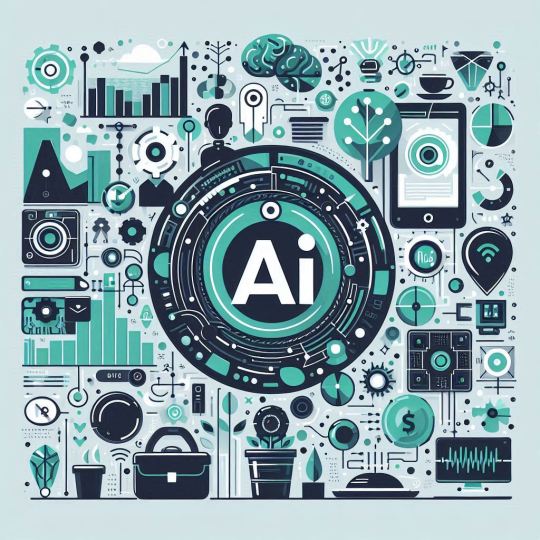
AI is revolutionizing business operations. Using AI-fuelled solutions means that you can automate processes, bring in positive customer experiences, and get insights. AI chatbots: AI can be utilized in the form of a conversational entity to support and perform backend operations, as well.
With a bit more specificity, say for example that an AI-powered recommendation engine recommends products to customers based on their browsing history and purchase patterns (as the use case of retail). This helps to increase the sales and improve the shopping experience.
3. Prioritize Cybersecurity
Cybersecurity is of utmost important as more and more business transitions towards digital platforms. Businesses need to part with a more substantial amount of money on advanced protective measures so that they can keep sensitive data private and continue earning consumer trust. Regular security audits and training of employees can reduce these risks.
Example: A financial services firm may implement multi-factor authentication (MFA) for all online transactions, regularly control access to Internet-facing administrative interfaces and service ports as well as the encryption protocols to secure client data from cyberattacks.
4. Optimizing Remote and Hybrid Working Models
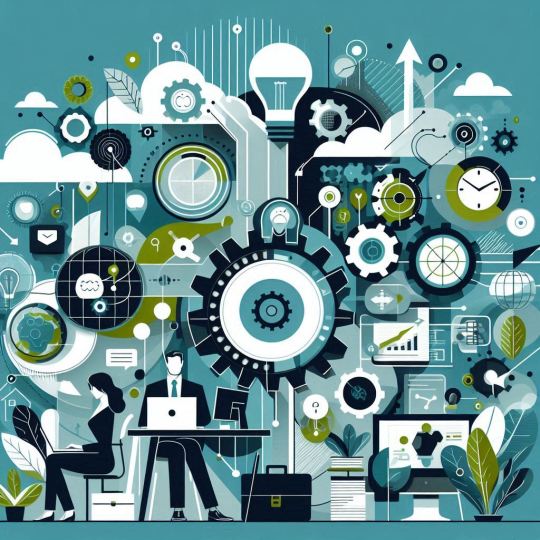
Remote / hybrid is the new normal Remote teams force companies to implement effective motivation and management strategies. Collaboration tools and a balanced virtual culture can improve productivity and employee satisfaction.
- Illustration: a Tech company using Asana / Trello etc. for pm to keep remote teams from falling out of balance. They can also organise weekly team-building activities to keep a strong team spirit.
5. Focus on Customer Experience
Retention and growth of the sales follow-through can be tied to high quality customer experiences. Harness data analytics to deepen customer insights and personalize product offers making your marketing campaigns personal: a customer support that is responsive enough can drive a great level of returning customers.
Example – For any e-commerce business, you can take user experience feedback tools to know about how your customers are getting along and make necessary changes. Custom email campaigns and loyalty programs can also be positively associated with customer satisfaction and retention.
6. Digitalization Investment

It is only the beginning of digital transformation which we all know, is key to global competitiveness. For streamlining, companies have to adopt the use advanced technologies such as Blockchain Technology and Internet of Things (IoT) in conjunction with cloud computing.
IoT example : real-time tracking and analytics to optimize supply chain management
7. Enhance Employee Skills
Develop Your Employees: Investing in employee development is key to succeeding as a business. The training is provided for the folks of various industries and so employees can increase their skills that are needed to work in a certain company. Employee performance can be enhanced by providing training programs in future technology skills and soft skills and job satisfaction.
Example: A marketing agency can host webinars or create courses to teach people the latest digital marketing trends and tools This can help to keep employees in the know which results in boosting their skills, making your campaigns successful.
8. Diversify Supply Chains

The ongoing pandemic has exposed the weaknesses of global supply chains. …diversify its supply base and promote the manufacturing of drugs in Nigeria to eliminate total dependence on a single source. In return, this approach increases resilience and reduces exposure to the risks of supply chain interruption.
- E.g., a consumer electronics company can source components from many suppliers in various regions. In so doing, this alleviates avoidable supply chain interruptions during times of political tensions or when disasters hit.
9. Make Decisions Based on Data
A business database is an asset for businesses. By implementing data, they allow you to make decisions based on the data that your analytics tools are providing. For example, sales analysis lets you track trends and better tailor your goods to the market.
Example: A retail chain can use data analytics to find out when a customer buys, and it change their purchasing policies. This can also reduce overstock and stockouts while overall, increasing efficiency.
10. Foster Innovation
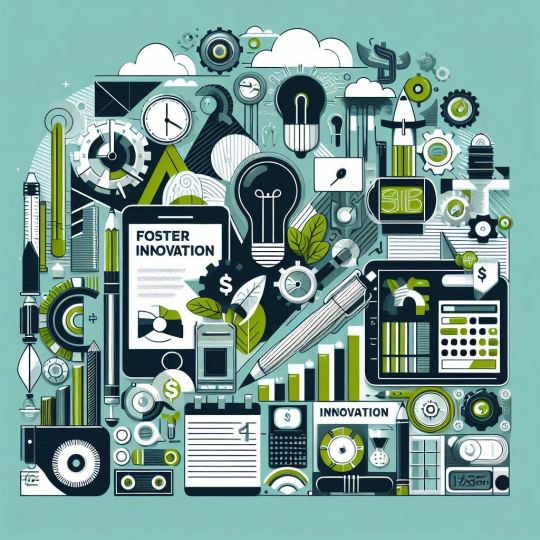
Business Growth Innovation is Key A culture of creativity and experimentation should be established in companies. Funding R&D and teaming with startups can open many doors to both solve problems creatively but also tap into new markets.
Example: A software development firm could create an innovation lab where team members are freed to work on speculative projects. Moreover, work with start-ups on new technologies and solutions.
By adopting these strategies, businesses can navigate the turbulence for 2024 and roll up market — progressive.AI with an evolving dynamic market, being ahead of trends and updated is most likely will help you thrive in the business landscape.
#ai#business#business strategy#business growth#startup#fintech#technology#tech#innovation#ai in business
2 notes
·
View notes
Text
Characteristics and Applications of LoRa Spread Spectrum Modulation SoC Module
LoRa spread spectrum modulation technology, known for its low power consumption and long-distance transmission capabilities, excels in long-range wireless communication. So, what kind of sparks will this modulation technology create when applied to SOC modules? Let's briefly illustrate this with the LoRa-STM32WLE5 LoRa spread spectrum modulation SOC module developed by NiceRF.
The LoRa-STM32WLE5 wireless module is SOC wireless module the latest developed by NiceRF Wireless. The LoRa-STM32WLE5 adopts ST's STM32WLE5 chip as the main chip, equipped with a high-performance Arm Cortex-M4 32-bit RISC core, operating at a frequency of up to 48 MHz. supporting 256KB flash memory and 64KB operational memory. This module ensures ample storage and processing capabilities. Additionally, the module is equipped with an industrial-grade crystal oscillator, ensuring stable operation in various working environments.
In terms of communication technology, the LoRa-STM32WLE5 adopts LoRa spread spectrum modulation, which features low power consumption and long-distance transmission. This makes the module perform exceptionally well in ultra-long-range wireless communication. It has a high receiving sensitivity of up to -141dBm@BW=125KHz and adjustable transmission power, with a maximum of 22dBm, allowing for transmission distances of over 5000 meters. This characteristic offers extensive application possibilities in fields such as security systems, smart agriculture, and industrial manufacturing.

In addition to its technical features, the LoRa-STM32WLE5 also has advantages such as low power consumption, secure encryption, and multiple interface types. Its sleep current is less than 1uA, and its receive current is less than 8mA, making it suitable for scenarios requiring long battery life and high energy efficiency. Additionally, it supports 256-bit hardware encryption and PCROP read/write protection, ensuring data security and integrity. The support for various interface types, including UART, SPI, I2C, GPIO, and ADC, enables it to meet the interface needs of different application scenarios, offering excellent scalability and flexibility.
In terms of applications, the LoRa-STM32WLE5 wireless module can be widely used in security systems, smart agriculture, industrial manufacturing, and smart home scenarios.
For example: in security systems, it can be used for remote monitoring and alarm systems; in smart agriculture, it can be utilized for agricultural environment monitoring and automated irrigation systems;in industrial manufacturing, it can be applied to equipment monitoring and remote control systems; and in smart homes, it can be used for smart door locks and environmental monitoring.
In the future, with the development of IoT technology and the proliferation of intelligent applications, the LoRa-STM32WLE5 wireless module is expected to demonstrate its value in more fields. For instance, in urban smart construction, it can be applied to smart city traffic systems and intelligent energy management. In the industrial IoT sector, it can be used for remote monitoring of industrial equipment and intelligent production lines. Additionally, as technology continues to advance and costs continue to decrease, the LoRa-STM32WLE5 wireless module will become more widespread and mature, bringing more convenience and possibilities to people's lives.
For details, please click:https://www.nicerf.com/products/ Or click:https://nicerf.en.alibaba.com/productlist.html?spm=a2700.shop_index.88.4.1fec2b006JKUsd For consultation, please contact NiceRF (Email: [email protected]).
4 notes
·
View notes
Text
Intel VTune Profiler For Data Parallel Python Applications
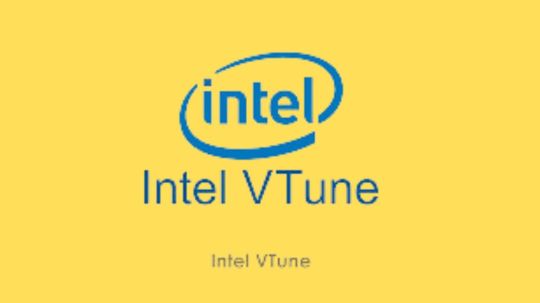
Intel VTune Profiler tutorial
This brief tutorial will show you how to use Intel VTune Profiler to profile the performance of a Python application using the NumPy and Numba example applications.
Analysing Performance in Applications and Systems
For HPC, cloud, IoT, media, storage, and other applications, Intel VTune Profiler optimises system performance, application performance, and system configuration.
Optimise the performance of the entire application not just the accelerated part using the CPU, GPU, and FPGA.
Profile SYCL, C, C++, C#, Fortran, OpenCL code, Python, Google Go, Java,.NET, Assembly, or any combination of languages can be multilingual.
Application or System: Obtain detailed results mapped to source code or coarse-grained system data for a longer time period.
Power: Maximise efficiency without resorting to thermal or power-related throttling.
VTune platform profiler
It has following Features.
Optimisation of Algorithms
Find your code’s “hot spots,” or the sections that take the longest.
Use Flame Graph to see hot code routes and the amount of time spent in each function and with its callees.
Bottlenecks in Microarchitecture and Memory
Use microarchitecture exploration analysis to pinpoint the major hardware problems affecting your application’s performance.
Identify memory-access-related concerns, such as cache misses and difficulty with high bandwidth.
Inductors and XPUs
Improve data transfers and GPU offload schema for SYCL, OpenCL, Microsoft DirectX, or OpenMP offload code. Determine which GPU kernels take the longest to optimise further.
Examine GPU-bound programs for inefficient kernel algorithms or microarchitectural restrictions that may be causing performance problems.
Examine FPGA utilisation and the interactions between CPU and FPGA.
Technical summary: Determine the most time-consuming operations that are executing on the neural processing unit (NPU) and learn how much data is exchanged between the NPU and DDR memory.
In parallelism
Check the threading efficiency of the code. Determine which threading problems are affecting performance.
Examine compute-intensive or throughput HPC programs to determine how well they utilise memory, vectorisation, and the CPU.
Interface and Platform
Find the points in I/O-intensive applications where performance is stalled. Examine the hardware’s ability to handle I/O traffic produced by integrated accelerators or external PCIe devices.
Use System Overview to get a detailed overview of short-term workloads.
Multiple Nodes
Describe the performance characteristics of workloads involving OpenMP and large-scale message passing interfaces (MPI).
Determine any scalability problems and receive suggestions for a thorough investigation.
Intel VTune Profiler
To improve Python performance while using Intel systems, install and utilise the Intel Distribution for Python and Data Parallel Extensions for Python with your applications.
Configure your Python-using VTune Profiler setup.
To find performance issues and areas for improvement, profile three distinct Python application implementations. The pairwise distance calculation algorithm commonly used in machine learning and data analytics will be demonstrated in this article using the NumPy example.
The following packages are used by the three distinct implementations.
Numpy Optimised for Intel
NumPy’s Data Parallel Extension
Extensions for Numba on GPU with Data Parallelism
Python’s NumPy and Data Parallel Extension
By providing optimised heterogeneous computing, Intel Distribution for Python and Intel Data Parallel Extension for Python offer a fantastic and straightforward approach to develop high-performance machine learning (ML) and scientific applications.
Added to the Python Intel Distribution is:
Scalability on PCs, powerful servers, and laptops utilising every CPU core available.
Assistance with the most recent Intel CPU instruction sets.
Accelerating core numerical and machine learning packages with libraries such as the Intel oneAPI Math Kernel Library (oneMKL) and Intel oneAPI Data Analytics Library (oneDAL) allows for near-native performance.
Tools for optimising Python code into instructions with more productivity.
Important Python bindings to help your Python project integrate Intel native tools more easily.
Three core packages make up the Data Parallel Extensions for Python:
The NumPy Data Parallel Extensions (dpnp)
Data Parallel Extensions for Numba, aka numba_dpex
Tensor data structure support, device selection, data allocation on devices, and user-defined data parallel extensions for Python are all provided by the dpctl (Data Parallel Control library).
It is best to obtain insights with comprehensive source code level analysis into compute and memory bottlenecks in order to promptly identify and resolve unanticipated performance difficulties in Machine Learning (ML), Artificial Intelligence ( AI), and other scientific workloads. This may be done with Python-based ML and AI programs as well as C/C++ code using Intel VTune Profiler. The methods for profiling these kinds of Python apps are the main topic of this paper.
Using highly optimised Intel Optimised Numpy and Data Parallel Extension for Python libraries, developers can replace the source lines causing performance loss with the help of Intel VTune Profiler, a sophisticated tool.
Setting up and Installing
1. Install Intel Distribution for Python
2. Create a Python Virtual Environment
python -m venv pyenv
pyenv\Scripts\activate
3. Install Python packages
pip install numpy
pip install dpnp
pip install numba
pip install numba-dpex
pip install pyitt
Make Use of Reference Configuration
The hardware and software components used for the reference example code we use are:
Software Components:
dpnp 0.14.0+189.gfcddad2474
mkl-fft 1.3.8
mkl-random 1.2.4
mkl-service 2.4.0
mkl-umath 0.1.1
numba 0.59.0
numba-dpex 0.21.4
numpy 1.26.4
pyitt 1.1.0
Operating System:
Linux, Ubuntu 22.04.3 LTS
CPU:
Intel Xeon Platinum 8480+
GPU:
Intel Data Center GPU Max 1550
The Example Application for NumPy
Intel will demonstrate how to use Intel VTune Profiler and its Intel Instrumentation and Tracing Technology (ITT) API to optimise a NumPy application step-by-step. The pairwise distance application, a well-liked approach in fields including biology, high performance computing (HPC), machine learning, and geographic data analytics, will be used in this article.
Summary
The three stages of optimisation that we will discuss in this post are summarised as follows:
Step 1: Examining the Intel Optimised Numpy Pairwise Distance Implementation: Here, we’ll attempt to comprehend the obstacles affecting the NumPy implementation’s performance.
Step 2: Profiling Data Parallel Extension for Pairwise Distance NumPy Implementation: We intend to examine the implementation and see whether there is a performance disparity.
Step 3: Profiling Data Parallel Extension for Pairwise Distance Implementation on Numba GPU: Analysing the numba-dpex implementation’s GPU performance
Boost Your Python NumPy Application
Intel has shown how to quickly discover compute and memory bottlenecks in a Python application using Intel VTune Profiler.
Intel VTune Profiler aids in identifying bottlenecks’ root causes and strategies for enhancing application performance.
It can assist in mapping the main bottleneck jobs to the source code/assembly level and displaying the related CPU/GPU time.
Even more comprehensive, developer-friendly profiling results can be obtained by using the Instrumentation and Tracing API (ITT APIs).
Read more on govindhtech.com
#Intel#IntelVTuneProfiler#Python#CPU#GPU#FPGA#Intelsystems#machinelearning#oneMKL#news#technews#technology#technologynews#technologytrends#govindhtech
2 notes
·
View notes
Text
How Can You Ensure Data Quality in Healthcare Analytics and Management?

Healthcare facilities are responsible for the patient’s recovery. Pharmaceutical companies and medical equipment manufacturers also work toward alleviating physical pain, stress levels, and uncomfortable body movement issues. Still, healthcare analytics must be accurate for precise diagnosis and effective clinical prescriptions. This post will discuss data quality management in the healthcare industry.
What is Data Quality in Healthcare?
Healthcare data quality management includes technologies and statistical solutions to verify the reliability of acquired clinical intelligence. A data quality manager protects databases from digital corruption, cyberattacks, and inappropriate handling. So, medical professionals can get more realistic insights using data analytics solutions.
Laboratories have started emailing the test results to help doctors, patients, and their family members make important decisions without wasting time. Also, assistive technologies merge the benefits of the Internet of Things (IoT) and artificial intelligence (AI) to enhance living standards.
However, poor data quality threatens the usefulness of healthcare data management solutions.
For example, pharmaceutical companies and authorities must apply solutions that remove mathematical outliers to perform high-precision data analytics for clinical drug trials. Otherwise, harmful medicines will reach the pharmacist’s shelf, endangering many people.
How to Ensure Data Quality in the Healthcare Industry?
Data quality frameworks utilize different strategies to prevent processing issues or losing sensitive intelligence. If you want to develop such frameworks to improve medical intelligence and reporting, the following 7 methods can aid you in this endeavor.
Method #1| Use Data Profiling
A data profiling method involves estimating the relationship between the different records in a database to find gaps and devise a cleansing strategy. Data cleansing in healthcare data management solutions has the following objectives.
Determine whether the lab reports and prescriptions match the correct patient identifiers.
If inconsistent profile matching has occurred, fix it by contacting doctors and patients.
Analyze the data structures and authorization levels to evaluate how each employee is accountable for specific patient recovery outcomes.
Create a data governance framework to enforce access and data modification rights strictly.
Identify recurring data cleaning and preparation challenges.
Brainstorm ideas to minimize data collection issues that increase your data cleaning efforts.
Ensure consistency in report formatting and recovery measurement techniques to improve data quality in healthcare.
Data cleaning and profiling allow you to eliminate unnecessary and inaccurate entries from patient databases. Therefore, healthcare research institutes and commercial life science businesses can reduce processing errors when using data analytics solutions.
Method #2| Replace Empty Values
What is a null value? Null values mean the database has no data corresponding to a field in a record. Moreover, these missing values can skew the results obtained by data management solutions used in the healthcare industry.
Consider that a patient left a form field empty. If all the care and life science businesses use online data collection surveys, they can warn the patients about the empty values. This approach relies on the “prevention is better than cure” principle.
Still, many institutions, ranging from multispecialty hospitals to clinical device producers, record data offline. Later, the data entry officers transform the filled papers using scanners and OCR (optical character recognition).
Empty fields also appear in the database management system (DBMS), so the healthcare facilities must contact the patients or reporting doctors to retrieve the missing information. They use newly acquired data to replace the null values, making the analytics solutions operate seamlessly.
Method #3| Refresh Old Records
Your physical and psychological attributes change with age, environment, lifestyle, and family circumstances. So, what was true for an individual a few years ago is less likely to be relevant today. While preserving historical patient databases is vital, hospitals and pharma businesses must periodically update obsolete medical reports.
Each healthcare business maintains a professional network of consulting physicians, laboratories, chemists, dietitians, and counselors. These connections enable the treatment providers to strategically conduct regular tests to check how patients’ bodily functions change throughout the recovery.
Therefore, updating old records in a patient’s medical history becomes possible. Other variables like switching jobs or traveling habits also impact an individual’s metabolism and susceptibility to illnesses. So, you must also ask the patients to share the latest data on their changed lifestyles. Freshly obtained records increase the relevance of healthcare data management solutions.
Method #4| Standardize Documentation
Standardization compels all professionals to collect, store, visualize, and communicate data or analytics activities using unified reporting solutions. Furthermore, standardized reports are integral to improving data governance compliance in the healthcare industry.
Consider the following principles when promoting a documentation protocol to make all reports more consistent and easily traceable.
A brand’s visual identities, like logos and colors, must not interfere with clinical data presentation.
Observed readings must go in the designated fields.
Both the offline and online document formats must be identical.
Stakeholders must permanently preserve an archived copy of patient databases with version control as they edit and delete values from the records.
All medical reports must arrange the data and insights to prevent ambiguity and misinterpretation.
Pharma companies, clinics, and FDA (food and drug administration) benefit from reporting standards. After all, corresponding protocols encourage responsible attitudes that help data analytics solutions avoid processing problems.
Method #5| Merge Duplicate Report Instances
A report instance is like a screenshot that helps you save the output of visualization tools related to a business query at a specified time interval. However, duplicate reporting instances are a significant quality assurance challenge in healthcare data management solutions.
For example, more than two nurses and one doctor will interact with the same patients. Besides, patients might consult different doctors and get two or more treatments for distinct illnesses. Such situations result in multiple versions of a patient’s clinical history.
Data analytics solutions can process the data collected by different healthcare facilities to solve the issue of duplicate report instances in the patients’ databases. They facilitate merging overlapping records and matching each patient with a universally valid clinical history profile.
Such a strategy also assists clinicians in monitoring how other healthcare professionals prescribe medicine to a patient. Therefore, they can prevent double dosage complications arising from a patient consuming similar medicines while undergoing more than one treatment regime.
Method #6| Audit the DBMS and Reporting Modules
Chemical laboratories revise their reporting practices when newly purchased testing equipment offers additional features. Likewise, DBMS solutions optimized for healthcare data management must receive regular updates.
Auditing the present status of reporting practices will give you insights into efficient and inefficient activities. Remember, there is always a better way to collect and record data. Monitor the trends in database technologies to ensure continuous enhancements in healthcare data quality.
Simultaneously, you want to assess the stability of the IT systems because unreliable infrastructure can adversely affect the decision-making associated with patient diagnosis. You can start by asking the following questions.
Questions to Ask When Assessing Data Quality in Healthcare Analytics Solutions
Can all doctors, nurses, agents, insurance representatives, patients, and each patient’s family members access the required data without problems?
How often do the servers and internet connectivity stop functioning correctly?
Are there sufficient backup tools to restore the system if something goes wrong?
Do hospitals, research facilities, and pharmaceutical companies employ end-to-end encryption (E2EE) across all electronic communications?
Are there new technologies facilitating accelerated report creation?
Will the patient databases be vulnerable to cyberattacks and manipulation?
Are the clinical history records sufficient for a robust diagnosis?
Can the patients collect the documents required to claim healthcare insurance benefits without encountering uncomfortable experiences?
Is the presently implemented authorization framework sufficient to ensure data governance in healthcare?
Has the FDA approved any of your prescribed medications?
Method #7| Conduct Skill Development Sessions for the Employees
Healthcare data management solutions rely on advanced technologies, and some employees need more guidance to use them effectively. Pharma companies are aware of this as well, because maintaining and modifying the chemical reactions involved in drug manufacturing will necessitate specialized knowledge.
Different training programs can assist the nursing staff and healthcare practitioners in developing the skills necessary to handle advanced data analytics solutions. Moreover, some consulting firms might offer simplified educational initiatives to help hospitals and nursing homes increase the skill levels of employees.
Cooperation between employees, leadership, and public authorities is indispensable to ensure data quality in the healthcare and life science industries. Otherwise, a lack of coordination hinders the modernization trends in the respective sectors.
Conclusion
Healthcare analytics depends on many techniques to improve data quality. For example, cleaning datasets to eliminate obsolete records, null values, or duplicate report instances remains essential, and multispecialty hospitals agree with this concept.
Therefore, medical professionals invest heavily in standardized documents and employee education to enhance data governance. Also, you want to prevent cyberattacks and data corruption. Consider consulting reputable firms to audit your data operations and make clinical trials more reliable.
SG Analytics is a leader in healthcare data management solutions, delivering scalable insight discovery capabilities for adverse event monitoring and medical intelligence. Contact us today if you want healthcare market research and patent tracking assistance.
3 notes
·
View notes
Text
Physical media discourse on here feels... weird (this is a long post)
I agree on a fundamental level that the move towards drm-based streaming licenses is bad, and that the perpetual-personal-content license (read: the license most DVDs are under) is a thing we should maintain, at least as a stopgap until the vanguard of communism empowers us to rewrite IP law.
That said, the language positioning Physical vs Digital, the insistence that anything other than physical media is bad, and the upholding of DVDs as a gold standard, all read to me as kinda tech-iliterate, and thus ignorant of the real issue at hand.
The primary issue with streaming, which folks on Tumblr *have* correctly identified, is to do with Access control.
The primary issue with streaming is that it requires a regular subscription payment, to exclusively view content under a license that can be revoked at any time for any reason.
This is the mechanism by which Netflix can kick you off your friend's account, this is also the mechanism by HBO can scrub Infinity Train from existence as a tax write-off.
This system is unequivocally bad, and the reason it's bad is because of DRM and Access Control. This may seem pedantic, but is an important distinction.
Let's take a look at DVDs now. Most DVDs are distributed under a license that grants you perpetual access to view in a private setting, but not to redistribute the content.
This is what that FBI warning that plays at the top of every DVD is trying to tell you, and is why ripping a DVD, while simple, is technically illegal.
Because the video file is hard-encoded into the DVD, and its proliferation largely predates the IOT zeitgeist, *most* DVDs don't contain any access control measures beyond that legal text, but this is not universal.
youtube
This is a great video outlining FlexPlay, an ill-faded technology that used a disk with light-sensitive material, that over the course of about a week or two, blacked out the disk rendering its contents un-viewable.
I bring this up because it highlights two issues.
One, DVDs aren't a physically resilient technology.
Disks are fragile, and even moderate scratches or damage can render a disk unreadable. This is a point of contention retro gamers have had for years, because while their NES cartridges still work, their PS1 disks don't.
This is not even to mention how the plastic of every broken disk still exists somewhere in the world, and will for centuries.
Two, it shows that IP conglomerates, have been at this for years, and won't be stopped in putting Access control into DVDs.
This means that buying DVDs of new shows forever is not an end-game solution. Unless you are content to stop consuming new media, eventually you're going to encounter a DRM protected disk.
To use another more recent example, remember when the Xbox One came out? They had this giant controversy over how playing a game locally on the disk still required online access to Microsoft's servers.
Your physical media could be locked right up for any reason by the platform itself. How can we trust that if DVDs or Blu Ray made a comeback that they would not suffer the same fate?
So where do we go from here, if physical media isn't safe?
Let's consider what digital video *is*. It's a file, same as any other. .mp4 .mov
Some, like .mp4 support DRM-encryption (although don't always contain any). Others, like .ogv exist free from DRM, thanks open source software developers.
Likewise, with a DRM encrypted digital file, because all of the data is hosted locally, just encrypted, there are ways to remove or bypass that encryption, because the VAST majority of cyber-security depends on a lack of knowledge.
This website has a number of very good resources both on drm-free digital storage mediums, and the process of removing certain types of DRM from digital files, (and was my primary resource for this paragraph)
https://www.defectivebydesign.org/so_youve_got_some_questions_do_you#:~:text=To%20avoid%20DRM%20and%20other,webm)%2C%20or%20Daala.
Storing your media as unlocked files presents the best of both worlds.
You have full control over access to your media, you own those files just as much as you own the hard drive you store them on.
You can buy media online, so long as the distributor gives you a media file instead of a streaming portal. You can also choose to obtain media files through other means, that's none of my business.
And you can do some really cool stuff like setting up a self-hosted media server, allowing you streaming-like remote access to all of your media, without ceding any ownership over that media. (Jellyfin is the most popular open-source solution but there are others) https://jellyfin.org/
And absolutely none of this is to mention the ways in which you can SUPPORT YOUR LOCAL LIBRARY, WHO MOST LIKELY HAS STREAMING OPTIONS.
In the US most public libraries maintain Kanopy and hoopla memberships, allowing you to access streamed content from your local library.
This has the added benefit of keeping the library's usage statistics up, which often helps them with securing more funding.
While you don't own the media, you also don't have to pay for it, and you crucially don't have to give your money to streaming services and IP hoarders.
It requires 0 technical background, and presents a more sustainable and equitable view of what streaming can look like.
So in conclusion:
Make sure you own the content you're paying for, and accept nothing less.
Don't be convinced that your DVDs are immune.
Learn some basics about networking, filetypes, cyber security and self-hosting if you really care about this stuff.
Support Open Source Software
Support Your Local Library
5 notes
·
View notes
Text
Exploring Python: Features and Where It's Used
Python is a versatile programming language that has gained significant popularity in recent times. It's known for its ease of use, readability, and adaptability, making it an excellent choice for both newcomers and experienced programmers. In this article, we'll delve into the specifics of what Python is and explore its various applications.
What is Python?
Python is an interpreted programming language that is high-level and serves multiple purposes. Created by Guido van Rossum and released in 1991, Python is designed to prioritize code readability and simplicity, with a clean and minimalistic syntax. It places emphasis on using proper indentation and whitespace, making it more convenient for programmers to write and comprehend code.
Key Traits of Python :
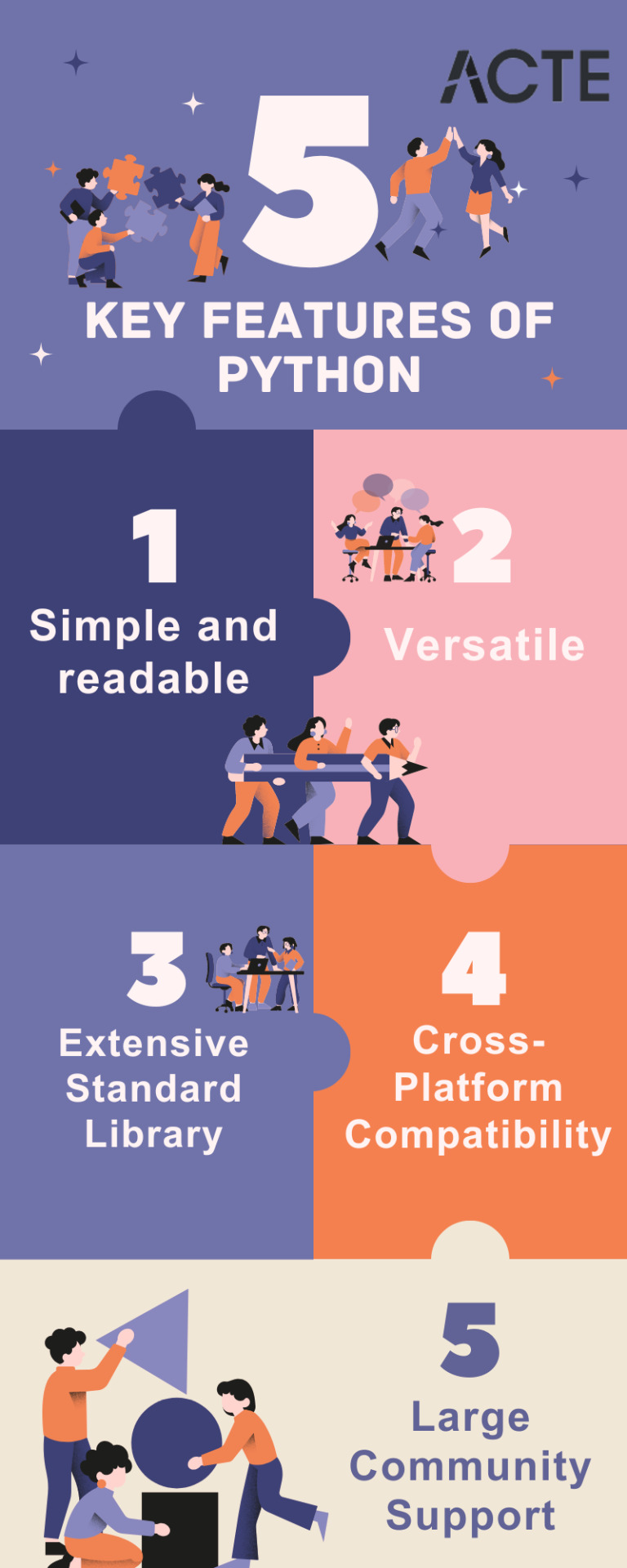
Simplicity and Readability: Python code is structured in a way that's easy to read and understand. This reduces the time and effort required for both creating and maintaining software.
Python code example: print("Hello, World!")
Versatility: Python is applicable across various domains, from web development and scientific computing to data analysis, artificial intelligence, and more.
Python code example: import numpy as np
Extensive Standard Library: Python offers an extensive collection of pre-built libraries and modules. These resources provide developers with ready-made tools and functions to tackle complex tasks efficiently.
Python code example: import matplotlib.pyplot as plt
Compatibility Across Platforms: Python is available on multiple operating systems, including Windows, macOS, and Linux. This allows programmers to create and run code seamlessly across different platforms.
Strong Community Support: Python boasts an active community of developers who contribute to its growth and provide support through online forums, documentation, and open-source contributions. This community support makes Python an excellent choice for developers seeking assistance or collaboration.
Where is Python Utilized?
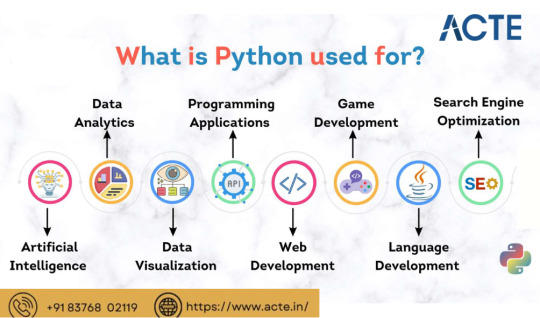
Due to its versatility, Python is utilized in various domains and industries. Some key areas where Python is widely applied include:
Web Development: Python is highly suitable for web development tasks. It offers powerful frameworks like Django and Flask, simplifying the process of building robust web applications. The simplicity and readability of Python code enable developers to create clean and maintainable web applications efficiently.
Data Science and Machine Learning: Python has become the go-to language for data scientists and machine learning practitioners. Its extensive libraries such as NumPy, Pandas, and SciPy, along with specialized libraries like TensorFlow and PyTorch, facilitate a seamless workflow for data analysis, modeling, and implementing machine learning algorithms.
Scientific Computing: Python is extensively used in scientific computing and research due to its rich scientific libraries and tools. Libraries like SciPy, Matplotlib, and NumPy enable efficient handling of scientific data, visualization, and numerical computations, making Python indispensable for scientists and researchers.
Automation and Scripting: Python's simplicity and versatility make it a preferred language for automating repetitive tasks and writing scripts. Its comprehensive standard library empowers developers to automate various processes within the operating system, network operations, and file manipulation, making it popular among system administrators and DevOps professionals.
Game Development: Python's ease of use and availability of libraries like Pygame make it an excellent choice for game development. Developers can create interactive and engaging games efficiently, and the language's simplicity allows for quick prototyping and development cycles.
Internet of Things (IoT): Python's lightweight nature and compatibility with microcontrollers make it suitable for developing applications for the Internet of Things. Libraries like Circuit Python enable developers to work with sensors, create interactive hardware projects, and connect devices to the internet.
Python's versatility and simplicity have made it one of the most widely used programming languages across diverse domains. Its clean syntax, extensive libraries, and cross-platform compatibility make it a powerful tool for developers. Whether for web development, data science, automation, or game development, Python proves to be an excellent choice for programmers seeking efficiency and user-friendliness. If you're considering learning a programming language or expanding your skills, Python is undoubtedly worth exploring.
9 notes
·
View notes
Text
Indonesia Smart Cities Market Outlook for Forecast Period (2023 to 2030)
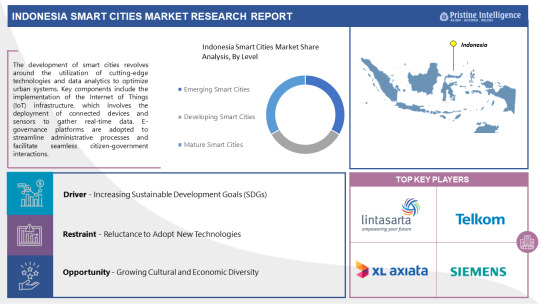
Indonesia's Smart Cities are Expected to Grow at a Significant Growth Rate, and the Forecast Period is 2023-2030, Considering the Base Year as 2022.
The development of smart cities revolves around the utilization of cutting-edge technologies and data analytics to optimize urban systems. Key components include the implementation of the Internet of Things (IoT) infrastructure, which involves the deployment of connected devices and sensors to gather real-time data.
This data is then analyzed to provide valuable insights that inform decision-making by city officials. Smart mobility solutions play a vital role in improving transportation networks, easing traffic congestion, and promoting eco-friendly transit options. E-governance platforms are adopted to streamline administrative processes and facilitate seamless citizen-government interactions.
Sustainability initiatives are emphasized, including energy-efficient buildings, renewable energy integration, waste management, and environmental conservation. Moreover, citizen engagement is fostered through digital platforms, allowing residents to actively participate in shaping urban policies and providing feedback to authorities.
One of the notable examples of smart city development in Indonesia is the "Jakarta Smart City" initiative. As the capital and most populous city in the country, Jakarta faces numerous urban challenges such as traffic congestion, waste management, and environmental pollution. To tackle these issues, the Jakarta Smart City program leverages technology and data to improve various urban services. Real-time traffic data is collected through IoT sensors to optimize transportation routes and manage traffic flow efficiently.
Waste management is enhanced by implementing smart waste bins that alert authorities when they need to be emptied, reducing unnecessary waste collection trips. Moreover, the program employs digital platforms and mobile applications to engage citizens, allowing them to access information about city services, report issues, and participate in decision-making processes. These efforts have aimed to transform Jakarta into a more sustainable, efficient, and citizen-centric smart city.
Get Full PDF Sample Copy of Report: (Including Full TOC, List of Tables & Figures, Chart) @
The latest research on the Indonesia Smart Cities market provides a comprehensive overview of the market for the years 2023 to 2030. It gives a comprehensive picture of the global Indonesia Smart Cities industry, considering all significant industry trends, market dynamics, competitive landscape, and market analysis tools such as Porter's five forces analysis, Industry Value chain analysis, and PESTEL analysis of the Indonesia Smart Cities market. Moreover, the report includes significant chapters such as Patent Analysis, Regulatory Framework, Technology Roadmap, BCG Matrix, Heat Map Analysis, Price Trend Analysis, and Investment Analysis which help to understand the market direction and movement in the current and upcoming years. The report is designed to help readers find information and make decisions that will help them grow their businesses. The study is written with a specific goal in mind: to give business insights and consultancy to help customers make smart business decisions and achieve long-term success in their particular market areas.
Market Driver:
One of the key drivers propelling the growth of the Indonesia Smart Cities market is the government's strong commitment to urban development and digital transformation. Initiatives such as the 100 Smart Cities Movement and various smart city pilot projects across the archipelago are driving the integration of smart technologies. The government's emphasis on creating efficient and sustainable urban ecosystems through the adoption of smart solutions is encouraging both public and private sector investments. As a result, there is a growing demand for intelligent infrastructure, smart transportation systems, and data-driven governance to address the challenges of rapid urbanization.
Market Opportunity:
An exciting opportunity within the Indonesia Smart Cities market lies in the development of smart transportation systems. As urbanization accelerates, traffic congestion and transportation inefficiencies pose significant challenges. Implementing smart transportation solutions, including intelligent traffic management, integrated public transportation systems, and the adoption of electric vehicles, can greatly enhance urban mobility. The integration of these technologies not only addresses current challenges but also creates a foundation for sustainable and future-ready urban transportation. Entrepreneurs and businesses investing in smart transportation solutions stand to benefit from a burgeoning market with the potential to transform how people and goods move within cities.
Leading players involved in the Indonesia Smart Cities Market include:
PT Aplikanusa Lintasarta (Indonesia), PT Telkom (Telekomunikasi Indonesia Tbk) (Indonesia), PT XL Axiata Tbk (Indonesia), Siemens (Germany), Schneider Electric (France), Philips (Netherlands), Huawei Tech Investment (China), PT Waskita Karya (Indonesia), PT KAI Commuter Jabodetabek (Indonesia), PT Indosat Ooredoo (Indonesia), PT Link Net Tbk (First Media) (Indonesia), PT Surya Semesta Internusa (Indonesia), Ace Hardware Tbk (US), PT Sinar Mas Land (Indonesia), PT Cipta Kridatama (Indonesia), SICE (Spain), PT Cyberindo Aditama (CBN) (Indonesia), PT Sampoerna Telekomunikasi Indonesia (STI) (Indonesia), PT Pelayaran Tempuran Emas Tbk (TEMAS) (Indonesia), PT Bangun Cipta Kontraktor (BCK) (Indonesia), and Other Major Players.
If You Have Any Query Indonesia Smart Cities Market Report, Visit:
Segmentation of Indonesia Smart Cities Market:
By Solution and Service
Smart Mobility Management
Smart Public Safety
Smart Healthcare
Smart Building
Smart Utilities
Others
By Component
Hardware
Software
Service
By Level
Emerging Smart Cities
Developing Smart Cities
Mature Smart Cities
By End-user
Government & Municipalities
Transportation & Logistics
Energy & Utilities
Healthcare
Education
Others
Owning our reports (For More, Buy Our Report) will help you solve the following issues:
Uncertainty about the future?
Our research and insights help our clients to foresee upcoming revenue pockets and growth areas. This helps our clients to invest or divest their resources.
Understanding market sentiments?
It is imperative to have a fair understanding of market sentiments for a strategy. Our insights furnish you with a hawk-eye view on market sentiment. We keep this observation by engaging with Key Opinion Leaders of a value chain of each industry we track.
Understanding the most reliable investment centers?
Our research ranks investment centers of the market by considering their returns, future demands, and profit margins. Our clients can focus on the most prominent investment centers by procuring our market research.
Evaluating potential business partners?
Our research and insights help our clients in identifying compatible business partners.
Acquire This Reports: -
About Us:
We are technocratic market research and consulting company that provides comprehensive and data-driven market insights. We hold the expertise in demand analysis and estimation of multidomain industries with encyclopedic competitive and landscape analysis. Also, our in-depth macro-economic analysis gives a bird's eye view of a market to our esteemed client. Our team at Pristine Intelligence focuses on result-oriented methodologies which are based on historic and present data to produce authentic foretelling about the industry. Pristine Intelligence's extensive studies help our clients to make righteous decisions that make a positive impact on their business. Our customer-oriented business model firmly follows satisfactory service through which our brand name is recognized in the market.
Contact Us:
Office No 101, Saudamini Commercial Complex,
Right Bhusari Colony,
Kothrud, Pune,
Maharashtra, India - 411038 (+1) 773 382 1049 +91 - 81800 - 96367
Email: [email protected]
#Indonesia Smart Cities#Indonesia Smart Cities Market#Indonesia Smart Cities Market Size#Indonesia Smart Cities Market Share#Indonesia Smart Cities Market Growth#Indonesia Smart Cities Market Trend#Indonesia Smart Cities Market segment#Indonesia Smart Cities Market Opportunity#Indonesia Smart Cities Market Analysis 2023#US Indonesia Smart Cities Market#Indonesia Smart Cities Market Forecast#Indonesia Smart Cities Industry#Indonesia Smart Cities Industry Size#china Indonesia Smart Cities Market#UK Indonesia Smart Cities Market
2 notes
·
View notes
Text
Best Data Science Courses Online - Skillsquad
Why is data science important?
Information science is significant on the grounds that it consolidates instruments, techniques, and innovation to create importance from information. Current associations are immersed with information; there is a multiplication of gadgets that can naturally gather and store data. Online frameworks and installment gateways catch more information in the fields of web based business, medication, finance, and each and every part of human existence. We have text, sound, video, and picture information accessible in huge amounts.
Best future of data science with Skillsquad
Man-made consciousness and AI advancements have made information handling quicker and more effective. Industry request has made a biological system of courses, degrees, and occupation positions inside the field of information science. As a result of the cross-practical range of abilities and skill required, information science shows solid extended development throughout the next few decades.
What is data science used for?
Data science is used in four main ways:
1. Descriptive analysis
2. Diagnostic analysis
3. Predictive analysis
4. Prescriptive analysis
1. Descriptive analysis: -
Distinct examination looks at information to acquire experiences into what occurred or what's going on in the information climate. It is portrayed by information representations, for example, pie diagrams, bar outlines, line charts, tables, or created accounts. For instance, a flight booking administration might record information like the quantity of tickets booked every day. Graphic investigation will uncover booking spikes, booking ruts, and high-performing a very long time for this help.
2. Diagnostic analysis: -
Symptomatic investigation is a profound plunge or point by point information assessment to comprehend the reason why something occurred. It is portrayed by procedures, for example, drill-down, information revelation, information mining, and connections. Different information tasks and changes might be performed on a given informational index to find extraordinary examples in every one of these methods.
3. Predictive analysis: -
Prescient examination utilizes authentic information to make precise gauges about information designs that might happen from here on out. It is portrayed by procedures, for example, AI, determining, design coordinating, and prescient displaying. In every one of these procedures, PCs are prepared to figure out causality associations in the information
4. Prescriptive analysis: -
Prescriptive examination takes prescient information to a higher level. It predicts what is probably going to occur as well as proposes an ideal reaction to that result. It can investigate the likely ramifications of various decisions and suggest the best strategy. It utilizes chart investigation, reproduction, complex occasion handling, brain organizations, and suggestion motors from AI.
Different data science technologies: -
Information science experts work with complex advancements, for example,
- Computerized reasoning: AI models and related programming are utilized for prescient and prescriptive investigation.
- Distributed computing: Cloud innovations have given information researchers the adaptability and handling power expected for cutting edge information investigation.
- Web of things: IoT alludes to different gadgets that can consequently associate with the web. These gadgets gather information for information science drives. They create gigantic information which can be utilized for information mining and information extraction.
- Quantum figuring: Quantum PCs can perform complex estimations at high velocity. Gifted information researchers use them for building complex quantitative calculations.
We are providing the Best Data Science Courses Online
AWS Certification Program
Full Stack Java Developer Training Courses
2 notes
·
View notes
Text
The "Digital Silk Road" and the Chinese IoT
*Sort of.
(...)
Precisely what activities fall under the umbrella of the DSR has not been officially disclosed, but all known projects work to integrate the hard and soft infrastructures underpinning next-generation IoT capabilities. Examples include 5G antenna and base stations, fiber optic cables, data centers, smart city initiatives, and e-commerce platforms. Across the board, Beijing has encouraged tech companies to deepen cooperation with recipient countries. Some of the flagship companies that have joined the project are state-owned enterprises such as China Telecom and Unicom, as well as ostensibly private operators like China Mobile, Huawei, ZTE, and Dahua. The common denominator among these actors is a commitment to consolidating China’s presence in emerging markets and developing economies.
Over the past decade, Beijing has been able to build a parallel technological ecosystem that challenges Western-dominated norms. While this Initiative has the potential to enhance digital connectivity in developing economies, it also provides Beijing with a mechanism that can be used both to test its surveillance technology in third countries and to train these countries’ leaders on how to leverage the information that they collect. In a 2018 report, Freedom House cited a seminar on “Cyberspace Management for Officials from Countries Along the Belt and Road Initiative” that was repeated this year. It saw foreign officials visit the offices of a Chinese company that uses a big data toolkit to track negative public sentiment in real time and promote positive opinions of the government.
This style of surveillance and public opinion “guidance” is consistent with some of the other projects DSR sponsors have exported to third countries. In Venezuela, for example, PRC tech giant ZTE has been closely working with authorities to develop a system that can monitor citizens and, most importantly, their voting preferences.
FacebookTwitterEmailShare
4 notes
·
View notes